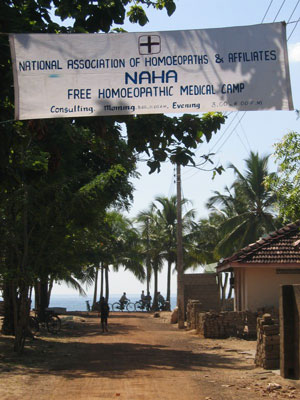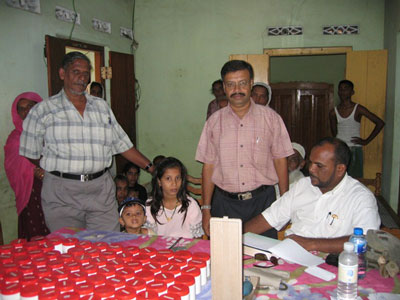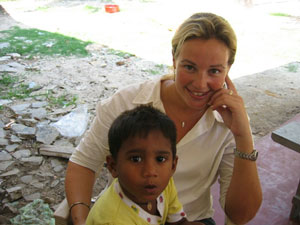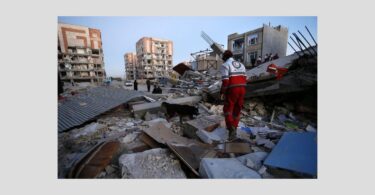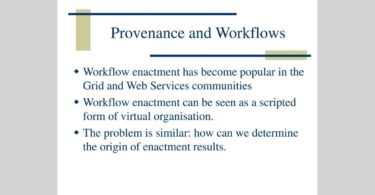CURRENT EXPERIENCE
Having arrived in Sri Lanka in March 2005 to volunteer with Homeopaths Without Borders – North America (HWB) for an intended stay of 3 weeks, I have subsequently found myself working in homeopathy clinics along the west coast 100km south of Colombo, in the Hikkaduwa region. The wave which hit the coast on 26 December 2004 killed over 40,000 people and in its wake left a trail of destruction that changed the course of the country forever. Boulders weighing half a ton were deposited 100 yards inland and overcrowded trains were swept off the rails by the second wave which reached a height of 30 feet. Homes were completely flattened, and families which were enjoying a Sunday morning off were suddenly and without warning torn apart.
The first few weeks saw a desperate need for emergency care. The first group of homeopaths to arrive, Rene Guarnaluse, Denis Marier and Eric Udell of the USA, consulted patients mainly suffering with wounds and injuries as a direct result of the tsunami, needing to tend to dressings and basic first aid. This was later replaced by acute conditions exacerbated by poor living conditions of people living in tents in monsoon rains. Over six months as medical care and the need for treatment normalised, my camps have continued to grow in the treatment of chronic disorders. Six days of every week I go into a village with a translator, offering free homeopathic treatment, consult on average 20 patients a day and distribute a pamphlet written in Sinhala explaining what homeopathy is.
Free homeopathic clinic in Kuleegoda, with volunteers Dr Ivy Dieltiens (on right) and Kate Diamantopoulo. Photo: Helen Diamantopoulo.
As homeopaths, we recognise the benefit and strengths of our profession in helping with emotional and mental traumas and know how effective our remedies are in helping patients cope. I am still trying to come to terms with the trauma endured by my patients – how does one deal with having to live with the knowledge that you lost one child in deciding to save the other? Or losing all your children together with your mother as that particular day you had an appointment in another village? Despite the loss of loved ones and homes, the fear and fright endured at the time, how do you process the aftermath when hundreds of bodies lay in the hot tropical sun? I’ve heard the stories, seen the destruction, and only during a brief visit to Europe did I get an opportunity to process the enormity of what the country has had to endure. Perhaps the commonality of grief, that everyone has suffered so much, makes it easier for the community to cope? Still, one can never truly understand.
As a result, one would expect to see an influx of psychosomatic cases, and to be able to help on a deeper level, but unfortunately it has been my perception that patients will consult a doctor (homeopathic or otherwise) only for physical pain. It has been frustrating not being able to use homeopathy to it’s full potential. Experience so far has shown that my own patients generally will not seek help for emotional disorders suffered as a result of the tsunami, though this often comes out in the case taking with symptoms of loss of appetite, insomnia etc. Patients generally do not understand (nor appreciate) the reason behind the indepth case-taking (about 15 minutes including the translation), and it has been suggested to me that they would prefer a shorter consultation time as they have grown accustomed to with western practise. Counselling of patients has been difficult as one needs to converse through the translators, and with a limited understanding of Sri Lankan culture (e.g. re-incarnation and other Buddhist beliefs), it becomes a tough area to venture into and to interpret the individualised reactions. One has also to deal with time constraints and lack of privacy in an open setting, so patients tend to provide only the physical complaints.
Despite the frustration at not being able to reach the majority of emotionally and mentally traumatised patients, one can treat the multiple disorders arising from the changes in living conditions (sleeping on the floor, overcrowding etc.) and offer some relief and comfort to people who have already suffered so much. Most of my cases have been either long standing arthritis or asthma, or injuries sustained whilst running away when the waves first hit (Arnica continues to be the most prescribed remedy). Coughs and colds, skin eruptions that have not been able to heal and hypertensive and diabetic patients are seen daily. In a country where Panadol’s are swallowed like sweets and antibiotics prescribed for every ailment, there is an overwhelming need to provide an alternative form of healthcare, especially as the majority of individuals cannot afford the cost of western medicine.
My method of prescription has been the split dose method as described by Samuel Hahnemann in the Organon’s sixth edition. Patients are requested to bring a bottle to their consultation, a single dose of the remedy (either 3 drops or 2 granules/pillules) is placed in the water, and patients are instructed to succuss the bottle 8 times prior to taking a teaspoon or capful.
The region in which I am currently based is a popular tourist destination and relatively free from the political upheaval seen in the north and east coast of Sri Lanka. As a result, many volunteers come to this region to help as it’s a scenic as well as safe area. Many NGO’s are established, and over the last 6 months I have seen the coastline develop in terms of building and reconstruction. Foreign programs (e.g. drama and music therapy) have come in to help children and victims deal with the emotional trauma. Schools with computers and libraries have been established with international aid. Boats have been donated by individuals to fishermen (there are now 3 times the number of boats in Galle that were there prior to the tsunami). Buses with tourists drive along the coasts handing out aid (anything from shoes to toys to toiletries). One can see the progress and development happening on a daily basis, and many families have been fortunate enough to come out of this disaster into better living conditions.
Unfortunately the financial aid has also brought with it a culture of greed and jealousy, a negative aspect induced by foreigners who have come in with no other intentions other than to help. Each community has a certain number of families, and only that exact number of aid can be left at the camps in order to avoid fighting. Tourists have been manipulated and deceived, and many volunteers have left disheartened. In 6 months, I’ve witnessed both the worst and the best in humanity, both from local people as well as international organisations. Fortunately due to the nature of homeopathy, I’ve been in a position to help those who are genuinely in need, and to gain access to the mothers and children of a community, thereby avoiding the negativity experienced by most volunteers providing financial aid.
THE EAST COAST
In July 2005 I ventured to Kalmunai – a village 1 hour south of Batticaloa on the east coast of Sri Lanka and the first area to be hit by the tidal waves. Contrary to my current experience, one could feel the fear still present in the community. In an area where houses were built in close proximity, the beach was now deserted. There was little sign of rebuilding and the silence broken by the crows gave a real insight into the trauma endured. You can sense the apprehension of a ghost town which lost over 2000 lives. Due to the heat and lack of facilities, this area is much less visited by foreigners, and while NGO’s and other organisations are seen, it has by no means the same support as the west coast.
Kalmunai. Photo taken 20 July 2005
The purpose of my trip was to visit the Homeopaths Without Borders (HWB) of Germany, who had been working in the area since February but with whom I had not yet established contact. This branch of HWB has set up a clinic in Sainthamuruthu in a rented house in the mornings (9 – 12 a.m.), and in the afternoon (3 – 6 p.m.) they visit one of 9 refugee camps. Volunteers are flown in from Germany every 2 to 3 weeks on a rotation basis.
In my own practise on the west coast, as well as what I understood from the German homeopaths, it is difficult to get patients to return for follow-up consultations (on average 10% return in my own practise). Although treatment appears effective and patients happy with results, my experience has shown they rarely come back until months later when the symptoms return or they have a new complaint. No explanation can be given for this. As patients don’t often return it’s difficult to gauge how the treatment is being received (a few have attributed this to the fact the clinics are free and therefore perceived as “less valuable”).
During my 4 days spent on the east coast in Kalmunai, I made arrangements to visit with some local homeopaths who are working with the National Association of Homeopaths and Affiliates (NAHA) and run free camps in the tsunami affected areas of Kalmunaikudy, Maruthamunai, Pandiruppa and Ninthavur. Four homeopathic doctors are responsible for running these camps every Saturday, and payment given for the use of their medicines and time. This project is funded by Brian O’Shaugnessy of Ireland, an individual who collected money to help give back livelihoods lost due to the tsunami.
Free homeopathic clinic set up by NAHA in Kalmunai.
In comparison to my normal daily practise, it was evident that the patients in these parts had suffered a greater deal. The trauma and emotional upsets were more open in the cases – a large number of family members had been lost in the tsunami as the housing in this particular area was very close together and densely populated. They were also quite obviously not as well taken care of as on the west coast. Despite the passing of 6 months, it still felt as if the tsunami had only recently struck in this area
Local homeopathic doctors Abdul Cader, Abdul Razack and Umar Moulana.
FUTURE PROSPECTS
Sri Lanka is an island on the verge of seeing the benefits of homeopathy and is at a position where new beginnings are being sought. It’s close proximity to India amazes me that to this time homeopathy has not been more developed. The current situation is the government and Ministry of Indigenous medicine has hired a representative (Dr Eswara Das) from India to promote and develop homeopathy here. There are approximately 170 registered homeopaths, one government hospital that consults about 200 out patients daily, and an undefined number of unregistered practitioners. Negotiations are underway which will potentially see the first homeopathic college in the country open in the following year.
Personally, I have accepted a job in a hotel as a resident homeopath, putting me in a position to promote homeopathy to tourists from around the world and to continue spreading homeopathy in this manner. I will be continuing my free clinics initially for 3 days a week, and hopefully bringing in more volunteers to continue the work I’ve started.
However, my 6 months experience with HWB North America and witnessing the efforts of HWB Germany on the east coast has shown that the running of free clinics is only one aspect of what needs to be done. As a means of spreading and developing homeopathy, the focus I feel should be on educating the community about homeopathy and not just handing out free “lactose tablets”. Empowering people to look after themselves gives them some sense of self-worth, as opposed to being at the mercy of foreign aid. To support the community in giving them the power to do something in terms of first aid or acute crises, homeopathy will be more effective and eventually gain a stronghold from which it can be developed. The objective should be to plant the seed, not distribute the fruit.
My recommendation is to train and use the local homeopaths to teach certain members of the community in basic homeopathic prescribing, and to form a network of support along tsunami affected areas. At least in this way, should another disaster strike (in whatever form), the local community will be able to help themselves to some extent. And its in this simple, yet effective practise of homeopathy, that will spark an interest in individuals to continue their studies and spread homeopathy through their own enthusiasm gained from direct experience.
SPECIAL THANKS
The support and encouragement received over the past 6 months from individuals has been overwhelming and touching. There have been times when I’ve questioned the purpose of my endeavour, become frustrated with my limitations, and working individually has proved exhausting at times It’s through the encouragement from people who have never met with me yet have taken the time to offer support that has kept me going, and thanks to generous donations that I have been able to sustain myself. In particular I would like to extend my greatest of appreciation to the following organisations and people:
· Homeopaths Without Borders, North America without whom this project would never have materialised. To everyone in the organisation for their continual support, especially Sushila Lalsingh, John Millar and Joe Lillard
· Kent Homeopathic Associates ([email protected]) of San Rafael, California, for their generous donation of the MacRepertory homeopathic software. It’s been invaluable to have access to the added source of information, and the speed and efficiency of repertorising has been a great asset.
· Australian Homoeopathic Association – WA Branch, and Phillip Hendry, for their financial donation in aid of the free clinics
Kate Diamantopoulo for her enthusiasm and passion for homeopathy, and for taking the time to come out and personally help. Also thanks for her donation from Arnica Montana products (www.arnica.com.au)
· Jan Owen of Owen Homeopathics (www.h-e-c.com.au), for her contribution of remedies and personal donation
· Dr M.A. Rangachari of Singapore for his personal donation of remedies through the support of Dr Mani of Homeo Drug Stores, Chennais, India
· Helios pharmacy (www.helios.co.uk) and John Morgan, Royal Tunbridge Wells, UK for their donation of remedies
Natura Laboratories, Pretoria, South Africa (www.natura.co.za) for their supply of remedies
Michael Huelsberg of Pflueger GmbH & Pflueger USA for their donation of remedies
Kuldeep Jain of BJain Publishers (www.bjainbooks.com), for his generosity and kindness, and for his commitment to spreading homeopathy
Indrani Meier and Rita Pasqual of HWB – Switzerland for their visit and encouragement
Dr Luc de Schepper (www.drluc.com) for his never ending support
Each individual that offered his/her moral support: Joe de Livera, Martin de Munck, Veronica Walton, Werner Kerschbaumer, Wim Serneels, as well as to all the volunteers who contacted me with offers of coming over to personally help and give of their time.
If you have any enquiries or suggestions, please feel free to contact me.
Dr Ivy Dieltiens (M.Tech.Hom.)
+94-773 184 390




